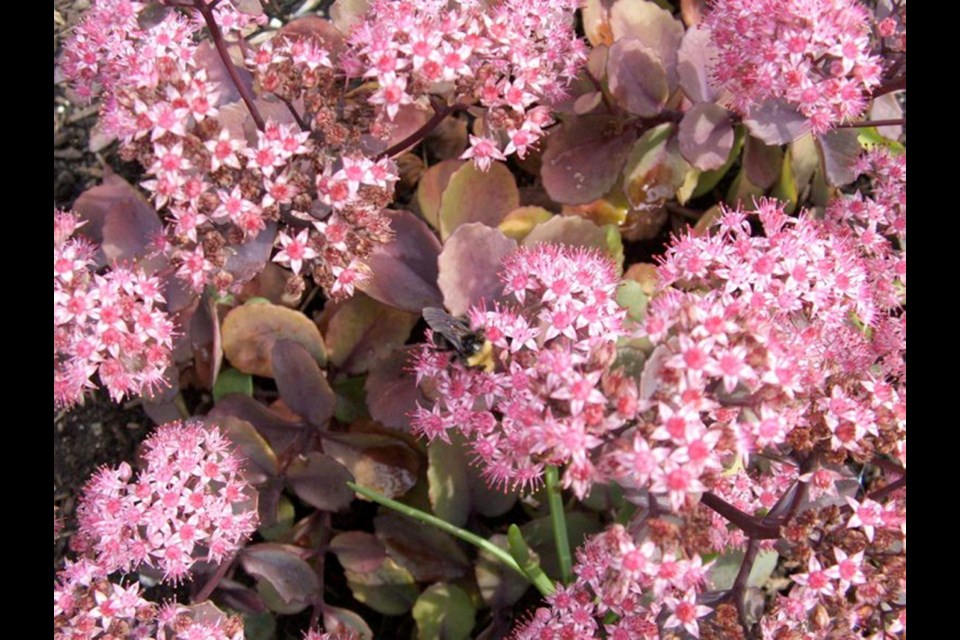One day in August I spent a pleasant hour or so with the owner of a nursery in the countryside near Parksville. This was one of the stops I made on a plant-hunting expedition in search of suitable plants for a dry, hot plot that forms a narrow strip between the driveway and a rock platform. The space needed major rehabilitation.
My friend was most helpful in pointing out likely specimens, many of them grey-leaved plants which, as a general rule, are heat-loving and fairly drought tolerant once well established. Here are the plants I chose.
• Silverbush (Convolvulus cneorum), an evergreen, mounding shrub with silky, silver-grey, hairy foliage and pinkish-white flowers in summer. The label indicates the plant will grow to 60 centimetres tall with a 90-cm spread and that it needs a hot, sunny position with poor, well-drained soil. This comely plant also has a Royal Horticultural Society Award of Garden Merit.
• Artemisia ‘Silver Mound’ is a familiar feathery, silver-grey plant that forms a compact dome. The trick to keeping this one neat is to clip it back hard, to five cm after flowering. Tender-hearted gardeners, loathe to so diminish a plant, end up with a gangly bit of disorder that looks as though it has been mugged.
• Stachys byzantina ‘Silver Carpet,’ a neat, non-flowering form of lamb’s ears, has soft, woolly, silver-grey foliage. One plant can spread 30 to 60 cm across but it stays just 10 to 15 cm high.
• Ballota pseudodictamus is an evergreen subshrub from Greece with felt-like, yellowish grey-green leaves and pinkish white flowers in late spring and early summer. It can grow to 45 cm.
• Sedum cyaneum ‘Rose Carpet’ forms a well-behaved clump of powdery, blue-green leaves. It grows just 10 to 15 cm high and bears deep pink flower clusters in August and September. I’m fond of sedums, and this one will be a fine companion for the Vera Jameson plants in the same bed. Vera Jameson is similar to Rose Carpet except for having mahogany-purple foliage. Both these sedums are deciduous. A showy, ground-hugging carpet of spoon-leaved stonecrop (Sedum spathulifolium) at the bottom, street end of the bed, is evergreen. Just now it is bright red with the cold weather.
• Gaura. I added to a collection of these airy perennials growing next to the sedums. I now have a pleasant mix of pink and white flowering Gauras that hold their sprays of delicate little blossoms on wiry stems. The heat and drought tolerant plants bloom for months, June through October, especially if they are trimmed back after the first flush of flowers.
The Hypearls. On our stroll through one of her greenhouses, my friend stopped to point out a Hypericum (St. John’s wort), another drought-tolerant plant, with the label ‘Hypearl.’ I already had this plant in my back garden, where it has done well in a hot, sunny spot beside a huge cedar stump.
There are four Hypearl varieties, each with a different berry colour: cream, red, salmon and pink. The labels I’ve seen do not specify the variety and I’m not sure which one I have, since the berries are creamy pink. I’m guessing ‘Jessica,’ whose berries are described as cream though a photo I found shows the same colouring as the berries on my plant.
The Hypearls bear the usual midsummer yellow flowers, followed by showy late summer and early autumn berries on compact, shapely plants that are easy-growing in both garden beds and containers. My plant grows about 60 cm tall.
I’m thinking that the Hypearls would look good growing with another favourite Hypericum called Albury Purple. It’s a slightly large, more fanned-out plant, which suits the lovely dusky purple foliage. The yellow blooms are attractive against the dark leaves and the berries mature to deep chocolate. The berried stems are interesting additions to floral arrangements. Albury Purple self-sows in my garden, but not enough to become a nuisance.
I cut Hypericums down in late winter to make way for all-new growth on young, compact plants.
